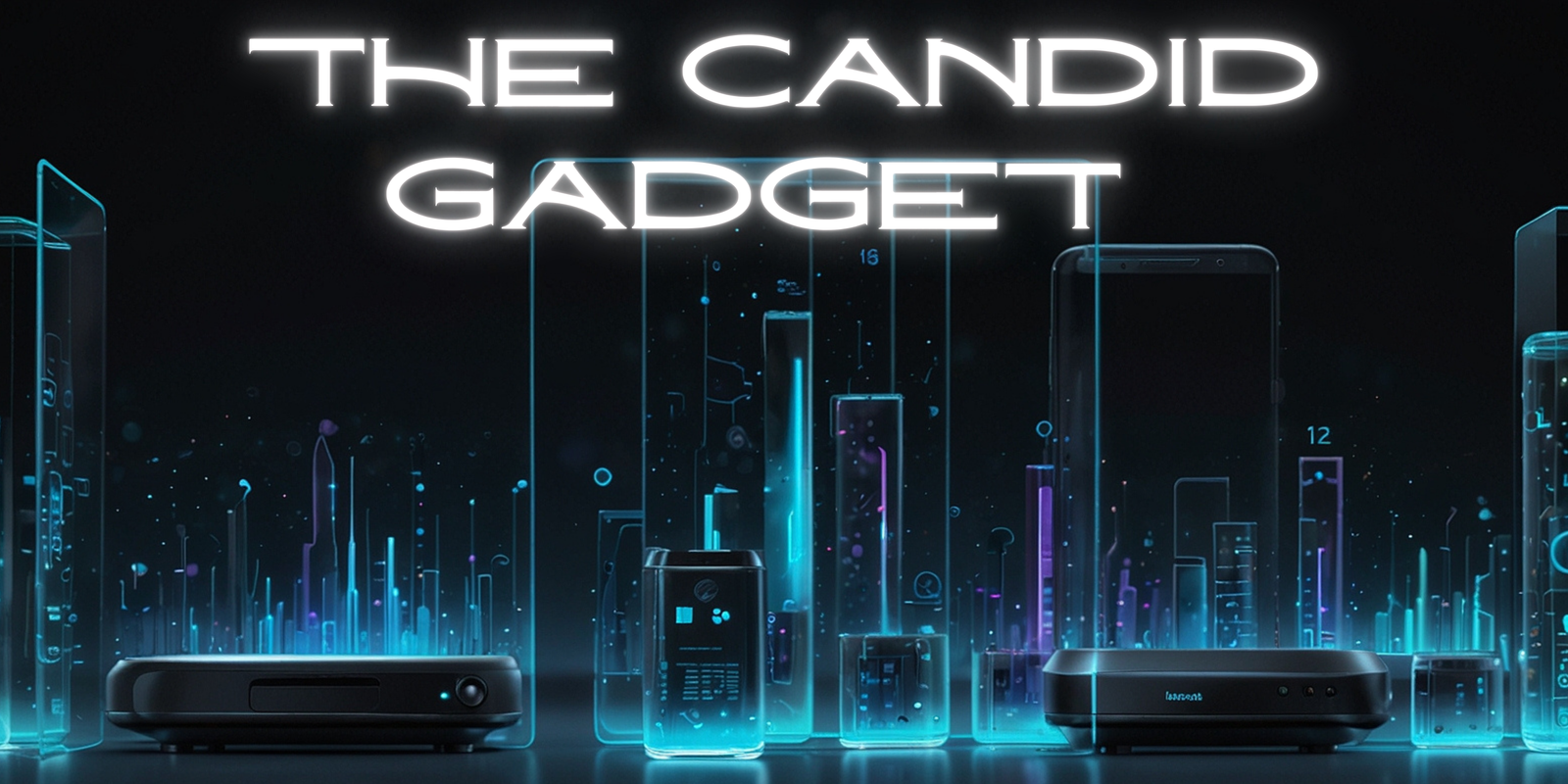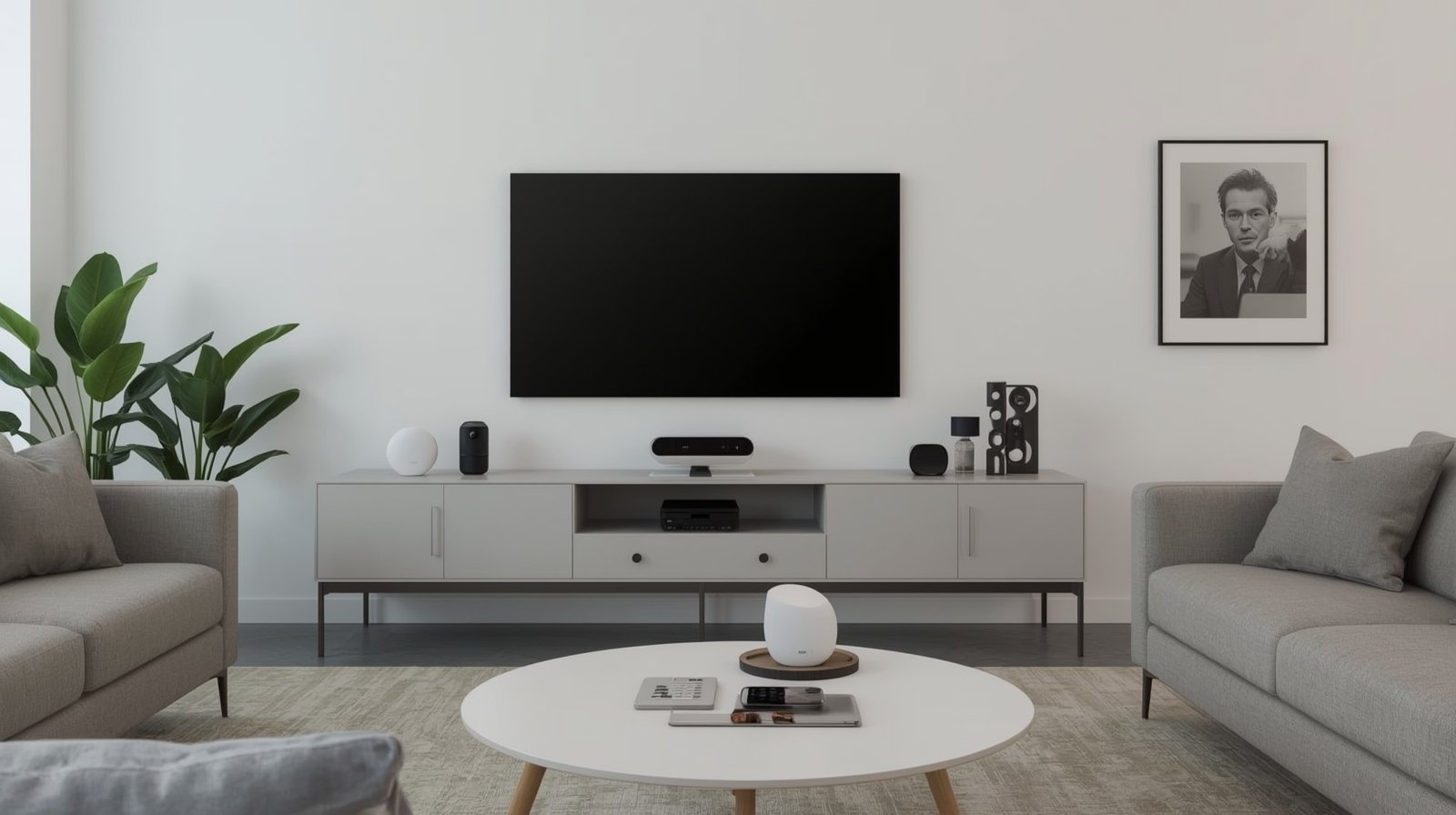The year 2025 is expected to bring significant advancements in smart home technology, transforming the way we live and interact with our living spaces. As we continue to embrace innovative lifestyle products, our homes are becoming increasingly intelligent and automated.

With the rise of smart home devices, homeowners can now enjoy enhanced convenience, comfort, and security. From voice-controlled assistants to automated lighting systems, these devices are revolutionizing the way we live and work.
This article will explore the top 10 devices that are making a significant impact in 2025, making our lives easier and more enjoyable.
Key Takeaways
- Discover the latest smart home devices that are changing the way we live.
- Learn how these innovative products can enhance your home’s comfort and security.
- Explore the benefits of integrating smart technology into your daily routine.
- Find out which devices are must-haves for a modern smart home.
- Get insights into the future of smart home technology and its potential applications.
The Smart Home Revolution: What’s Changed by 2025
By 2025, the smart home revolution has transformed our living spaces into futuristic hubs of convenience and efficiency. The integration of Artificial Intelligence (AI) and the Internet of Things (IoT) has played a pivotal role in this transformation.
Smart home technology has advanced significantly, making homes more automated and connected. Devices are now more intuitive, learning our preferences and adjusting settings accordingly.
The impact of these changes can be seen in various aspects of home life, from kitchen appliances to security systems. Here’s a summary of the key changes:
| Aspect | Pre-2025 | 2025 |
|---|---|---|
| Home Automation | Limited device integration | Seamless integration of multiple devices |
| Security | Basic alarm systems | Advanced AI-powered security systems |
| Energy Efficiency | Manual thermostat control | Automated energy management systems |
The future of smart homes looks promising, with futuristic home gadgets continuing to emerge and improve our living experiences. As home automation devices become more sophisticated, we can expect even more innovative solutions to enhance our daily lives.
Advanced AI Home Assistants: The New Command Centers
The latest generation of AI home assistants is revolutionizing the way we interact with our smart homes. These advanced devices are not just simple voice responders; they have evolved into sophisticated command centers that can control, monitor, and automate various aspects of our homes.
1. Amazon Echo Vision Pro with Holographic Interface
Overview
The Amazon Echo Vision Pro is a cutting-edge AI home assistant that features a holographic interface, providing users with a futuristic way to interact with their smart home devices. This device integrates seamlessly with other Amazon products and services, offering a comprehensive smart home experience.
Pros
- Enhanced User Experience: The holographic interface provides an immersive and interactive experience, making it easier to control smart devices.
- Seamless Integration: Works effortlessly with other Amazon devices and services, ensuring a cohesive smart home ecosystem.
Cons
- Cost: The advanced technology comes at a premium price, making it less accessible to budget-conscious consumers.
- Compatibility: While it integrates well with Amazon devices, compatibility with non-Amazon products may be limited.
Features
The Echo Vision Pro boasts an array of features, including:
- Holographic display for interactive visuals
- Advanced voice recognition for precise control
- Integration with Amazon Alexa for smart home management
2. Google Nest Hub Ultra with Spatial Intelligence
Overview
The Google Nest Hub Ultra is another advanced AI home assistant that leverages spatial intelligence to provide users with a more intuitive and responsive smart home experience. It uses AI to understand and adapt to the user’s environment, making it a powerful tool for home automation.
Pros
- Spatial Intelligence: The device’s ability to understand and adapt to the user’s spatial environment enhances its functionality and user experience.
- Google Ecosystem: For users deeply invested in the Google ecosystem, the Nest Hub Ultra offers seamless integration with other Google devices and services.
Cons
- Learning Curve: The advanced features and spatial intelligence may require a learning curve for some users.
- Privacy Concerns: As with any device that uses spatial intelligence and AI, there may be concerns regarding privacy and data collection.
Features
The Nest Hub Ultra includes features such as:
- Spatial intelligence for adaptive home automation
- Google Assistant integration for comprehensive smart home control
- High-resolution display for clear visuals
Both the Amazon Echo Vision Pro and Google Nest Hub Ultra represent significant advancements in AI home assistants, offering users more sophisticated and intuitive ways to manage their smart homes. As these technologies continue to evolve, we can expect even more innovative features and capabilities in the future.
Smart Kitchen Innovations That Transform Meal Preparation
With the advent of cutting-edge smart devices, meal preparation is undergoing a significant transformation. The kitchen, once a hub of manual labor and guesswork, is now becoming a domain of efficiency and innovation. In this section, we’ll explore two revolutionary devices that are changing the way we cook: the Samsung Family Hub Refrigerator with AI Meal Planning and the LG InstaChef Smart Oven with Recipe Recognition.
Samsung Family Hub Refrigerator with AI Meal Planning
Overview
The Samsung Family Hub Refrigerator is more than just a storage unit for your food; it’s a command center for your kitchen. Equipped with AI Meal Planning, it suggests recipes based on the ingredients you have, reducing food waste and making meal planning a breeze.
Pros
- Reduces Food Waste: Keeps track of expiring items and suggests recipes to use them up.
- Meal Planning: Plans meals for the week, making grocery shopping more efficient.
- Internal Cameras: Allows you to check what’s inside your fridge remotely, so you never forget an essential ingredient.
Cons
- High Initial Cost: The advanced features come at a premium price.
- Dependence on Technology: Over-reliance on the AI might make you less inclined to plan meals manually.
Features
| Feature | Description |
|---|---|
| AI Meal Planning | Suggests recipes based on ingredients and dietary preferences. |
| Internal Cameras | Allows remote checking of fridge contents. |
| Smart Inventory Management | Keeps track of items and their expiration dates. |
LG InstaChef Smart Oven with Recipe Recognition
Overview
The LG InstaChef Smart Oven is a marvel of modern technology, capable of recognizing recipes and adjusting cooking parameters accordingly. It makes cooking as simple as following a guided tutorial.
Pros
- Recipe Recognition: Automatically sets cooking parameters for recognized recipes.
- Guided Cooking: Step-by-step cooking instructions make cooking easier.
- Multi-Functionality: Can be used for baking, roasting, grilling, and more.
Cons
- Learning Curve: The numerous features might take time to get used to.
- Connectivity Issues: Dependence on Wi-Fi might lead to connectivity issues.
Features
| Feature | Description |
|---|---|
| Recipe Recognition | Automatically adjusts cooking settings for known recipes. |
| Guided Cooking | Provides step-by-step cooking instructions. |
| SmartThinQ App | Allows remote control and monitoring of the oven. |
As we can see, these smart kitchen innovations are not just gadgets; they’re game-changers. They make cooking more accessible, reduce waste, and bring a new level of efficiency to meal preparation. As smart home technology continues to evolve, we can expect even more exciting developments in the kitchen.
Next-Generation Security: Protection Beyond Alarms
Home security has evolved beyond traditional alarm systems, and the Ring Sentinel Pro is at the forefront of this revolution with its predictive security analysis. As one of the top smart home tools, it offers a comprehensive security solution that goes beyond mere alarm systems.

5. Ring Sentinel Pro with Predictive Security Analysis
Overview
The Ring Sentinel Pro is an advanced home device designed to provide homeowners with a sophisticated security system. It utilizes predictive security analysis to identify potential threats before they become incidents.
Pros
- Predictive security analysis for proactive threat detection
- Integration with other home automation devices for a seamless security experience
- Real-time alerts and notifications for timely response
Cons
- Requires a subscription for full feature access
- May have a learning curve for those unfamiliar with smart home technology
Features
The Ring Sentinel Pro boasts an array of features that make it one of the top smart home tools for security. These include:
- Advanced AI-powered predictive security analysis
- Integration with various smart home systems
- High-definition video monitoring
- Real-time alerts and customizable notifications
As part of the advanced home devices ecosystem, the Ring Sentinel Pro represents a significant step forward in home security. Its ability to predict and prevent security breaches makes it an invaluable addition to any home.
10 Smart Home Devices That Actually Make Life Easier in 2025
Delving deeper into the world of smart home technology, we find more devices that are truly making a difference in our daily lives. As we continue to explore the top smart home devices of 2025, we’re excited to share our findings on two more innovative products that are enhancing our living spaces.
6. Philips Hue Immersive Lighting System
Overview
The Philips Hue Immersive Lighting System is a revolutionary lighting solution that transforms your home into a dynamic environment. With its advanced technology, it creates an immersive experience that adapts to your mood, activity, or the time of day.
Pros
- Customizable ambiance: Adjust the lighting to suit your mood or activity.
- Energy efficiency: Optimize energy consumption with smart lighting controls.
- Integration: Seamlessly integrates with other smart home devices.
Cons
- Initial cost: The system can be expensive to install.
- Complexity: Setting up the system may require technical expertise.
Features
The Philips Hue Immersive Lighting System boasts an array of features, including:
- Dynamic lighting scenes: Pre-set scenes for different moods or activities.
- Color temperature control: Adjust the warmth or coolness of the lighting.
- Smart scheduling: Automate lighting changes based on your daily routine.
7. Sony Spatial Audio Home System with Room Adaptation
Overview
The Sony Spatial Audio Home System is designed to deliver an immersive audio experience that adapts to your home’s acoustics. With its advanced room adaptation technology, it ensures that the sound is optimized for your living space.
Pros
- Immersive audio: Enjoy a cinematic audio experience at home.
- Room adaptation: The system automatically adjusts to your room’s acoustics.
- Multi-room capability: Expand the system to multiple rooms for a whole-home audio experience.
Cons
- Cost: The system can be pricey, especially for larger homes.
- Complexity: Setting up the system may require some technical knowledge.
Features
The Sony Spatial Audio Home System features:
- Spatial audio technology: Creates a three-dimensional sound field.
- Automatic room calibration: Adjusts the sound to your room’s characteristics.
- Multi-device compatibility: Connects with various devices for a seamless listening experience.
These smart home devices are not only making our lives easier but also enhancing our living experiences. With their innovative features and capabilities, they’re sure to become integral parts of our daily routines.
Climate Control Systems That Learn and Adapt
As we continue to embrace the latest home tech solutions, climate control systems have become increasingly sophisticated. These advanced systems are designed to learn and adapt to our preferences, providing a more comfortable and energy-efficient home environment.
8. Ecobee SmartZone Thermostat with Occupancy Prediction
Overview
The Ecobee SmartZone Thermostat is a cutting-edge smart device that integrates occupancy prediction into its climate control system. This feature allows the thermostat to learn and adapt to the occupants’ schedules and preferences, ensuring optimal heating and cooling.

- Energy Efficiency: The Ecobee SmartZone Thermostat optimizes energy consumption by adjusting temperatures based on occupancy and schedules.
- Comfort: By learning occupants’ preferences, the thermostat ensures a consistently comfortable indoor climate.
- Remote Access: Users can control the thermostat remotely through the Ecobee app, providing flexibility and convenience.
Cons
- Initial Cost: The Ecobee SmartZone Thermostat is a premium product with a higher upfront cost compared to traditional thermostats.
- Installation Complexity: Depending on the existing HVAC system, installation may require professional assistance.
Features
The Ecobee SmartZone Thermostat boasts an array of advanced features, including:
- Occupancy Prediction: The thermostat learns and adapts to occupants’ schedules, optimizing heating and cooling.
- Smart Alerts: Users receive notifications about system performance and maintenance needs.
- Integration: The thermostat is compatible with various smart home systems, enhancing overall home automation.
In conclusion, the Ecobee SmartZone Thermostat with Occupancy Prediction represents a significant advancement in climate control technology. Its ability to learn and adapt to occupants’ preferences makes it a valuable addition to any smart home.
Health and Wellness Devices for Better Living
With the advancement of technology, smart home devices now extend their benefits to our well-being through cutting-edge health and wellness innovations. These devices are designed to make our lives not only easier but also healthier. In this section, we will explore two significant health and wellness devices that are making a difference in 2025.
Sleep Number SleepIQ Pro with Health Integration
Overview
The Sleep Number SleepIQ Pro is a revolutionary sleep technology that integrates with various health metrics to provide a comprehensive overview of your sleep health. It uses advanced algorithms to track sleep patterns, providing insights into sleep quality and duration.
Pros
- Personalized Sleep Insights: Offers detailed analysis of sleep patterns, helping you understand your sleep better.
- Health Integration: Syncs with various health apps to provide a holistic view of your well-being.
- Adjustable Settings: Allows for adjustments in firmness and support to ensure optimal comfort.
Cons
- Premium Pricing: The advanced features come at a higher cost, making it a significant investment.
- Complexity: The multitude of features can be overwhelming for some users.
Features
The SleepIQ Pro comes equipped with advanced features such as:
- Sleep Stage Tracking: Monitors different stages of sleep, including REM and deep sleep.
- Smart Alarm: Wakes you during a light sleep phase, ensuring you feel rested.
- Health Metric Integration: Syncs with health apps to track vital signs and other health metrics.
Kohler Smart Wellness Suite with Personalized Experiences
Overview
The Kohler Smart Wellness Suite is a comprehensive wellness solution that integrates various technologies to create a personalized wellness experience. It includes advanced shower systems, smart mirrors, and other wellness-focused devices.
Pros
- Personalized Experience: Offers tailored experiences based on user preferences and habits.
- Advanced Hygiene: Includes features like self-cleaning and antimicrobial technologies.
- Integration with Health Metrics: Syncs with health and wellness data for a holistic approach.
Cons
- High Installation Costs: Requires professional installation, adding to the overall cost.
- Dependence on Technology: Some users may find the reliance on technology overwhelming.
Features
The Kohler Smart Wellness Suite boasts features such as:
- Smart Water Management: Optimizes water usage based on user preferences.
- Personalized Lighting: Adjusts lighting to create a comfortable ambiance.
- Health Monitoring: Includes features to track health metrics, such as weight and body temperature.
Both the Sleep Number SleepIQ Pro and Kohler Smart Wellness Suite represent significant advancements in health and wellness technology, offering innovative solutions to enhance our quality of life.
The Future of Connected Living: Beyond 2025
As we approach the mid-2020s, the concept of connected living is set to evolve, driven by innovations in smart home gadgets and systems. The future of smart home technology promises to bring about even more seamless integration into our daily lives, enhancing convenience, efficiency, and sustainability.
One of the key trends expected to shape the future is the advancement of Artificial Intelligence (AI) in home automation. AI will enable homes to learn and adapt to occupants’ habits more effectively, making adjustments to lighting, temperature, and entertainment systems automatically.
The table below highlights some of the potential advancements in smart home technology beyond 2025:
| Technology | Application | Benefit |
|---|---|---|
| Advanced AI | Personalized Home Automation | Enhanced Convenience |
| IoT Integration | Seamless Device Connectivity | Increased Efficiency |
| Energy Harvesting | Sustainable Power Solutions | Reduced Environmental Impact |
As latest home tech solutions continue to emerge, we can expect our living spaces to become even more responsive to our needs, making life easier and more enjoyable. The future of connected living is bright, with futuristic home gadgets and innovative technologies leading the way.
Conclusion
As we step into 2025, it’s clear that smart home devices are revolutionizing the way we live. The 10 smart home devices that actually make life easier in 2025, discussed in this article, are not just gadgets; they’re game-changers. From advanced AI home assistants like Amazon Echo Vision Pro and Google Nest Hub Ultra, to smart kitchen innovations such as Samsung Family Hub Refrigerator and LG InstaChef Smart Oven, these home automation devices are making our lives more convenient and efficient.
Advanced home devices like Ring Sentinel Pro, Philips Hue Immersive Lighting System, and Sony Spatial Audio Home System are enhancing our home security, ambiance, and entertainment experiences. Meanwhile, climate control systems like Ecobee SmartZone Thermostat and health and wellness devices such as Sleep Number SleepIQ Pro and Kohler Smart Wellness Suite are improving our comfort and well-being.
These 10 smart home devices are just the beginning. As technology continues to evolve, we can expect even more innovative solutions to emerge, making our lives easier, more enjoyable, and more connected.








